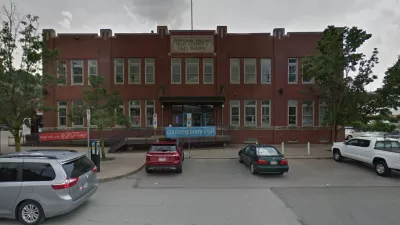Vermont enabled tax increment financing (TIF) for the city of Burlington in 1985, in keeping with a nationwide trend at the time. TIF is still a major player in the state's redevelopment efforts to this day.

Will Jason writes on the subject of tax increment financing (TIF), specifically as deployed as an economic development tool in the state of Vermont.
TIF functions by earmarking property tax revenues from increased real estate values in a defined district. Cities can use the revenue for development, whether public infrastructure or direct subsidies for private projects. However, as research has shown, TIF comes with hidden costs, from the loss of funds for schools and other local public services to a lack of accountability that can often lead to the questionable expenditure of tax dollars.
Jason credits active state oversight for insulating Vermont from some of the common risks associated with TIF, but also writes that Vermont still lacks a clear answer for a very fundamental question: "Does it truly stimulate new economic activity?"
Bruce Seifer, who helped lead the economic development office in Burlington for three decades, is quoted in the article, making the case for the benefits of the TIF program in the city of Burlington.
A study by University of Illinois at Chicago Professor David Merriman published in fall 2018 suggests that TIF programs do not achieve their stated goals of economic development.
The state of Vermont followed suit with its own study:
Last year, at the direction of the legislature, Vermont’s Legislative Joint Fiscal Office published a study that examined the performance of the state’s 10 active TIF districts. Comparing projected TIF revenues against revenues under a hypothetical scenario with no TIF, the study projects that from 2017 to 2030 TIF will cost the state about $68 million in school revenue (Vermont has an unusual statewide funding system for schools), and cost municipal general funds a total of $43 million, although it didn’t account for non-property tax revenues. It concluded that the economic benefits of TIF are uncertain.
Still, Vermont and its communities remain bullish on TIF, and Jason describes the state's approach to the program as effectively safeguarded against risk.
FULL STORY: Vermont Attempts a Kinder, Gentler TIF—But Will it Work?

Alabama: Trump Terminates Settlements for Black Communities Harmed By Raw Sewage
Trump deemed the landmark civil rights agreement “illegal DEI and environmental justice policy.”

Study: Maui’s Plan to Convert Vacation Rentals to Long-Term Housing Could Cause Nearly $1 Billion Economic Loss
The plan would reduce visitor accommodation by 25% resulting in 1,900 jobs lost.

Why Should We Subsidize Public Transportation?
Many public transit agencies face financial stress due to rising costs, declining fare revenue, and declining subsidies. Transit advocates must provide a strong business case for increasing public transit funding.

Paris Bike Boom Leads to Steep Drop in Air Pollution
The French city’s air quality has improved dramatically in the past 20 years, coinciding with a growth in cycling.

Why Housing Costs More to Build in California Than in Texas
Hard costs like labor and materials combined with ‘soft’ costs such as permitting make building in the San Francisco Bay Area almost three times as costly as in Texas cities.

San Diego County Sees a Rise in Urban Coyotes
San Diego County experiences a rise in urban coyotes, as sightings become prevalent throughout its urban neighbourhoods and surrounding areas.
Urban Design for Planners 1: Software Tools
This six-course series explores essential urban design concepts using open source software and equips planners with the tools they need to participate fully in the urban design process.
Planning for Universal Design
Learn the tools for implementing Universal Design in planning regulations.
Smith Gee Studio
Alamo Area Metropolitan Planning Organization
City of Santa Clarita
Institute for Housing and Urban Development Studies (IHS)
City of Grandview
Harvard GSD Executive Education
Toledo-Lucas County Plan Commissions
Salt Lake City
NYU Wagner Graduate School of Public Service





























